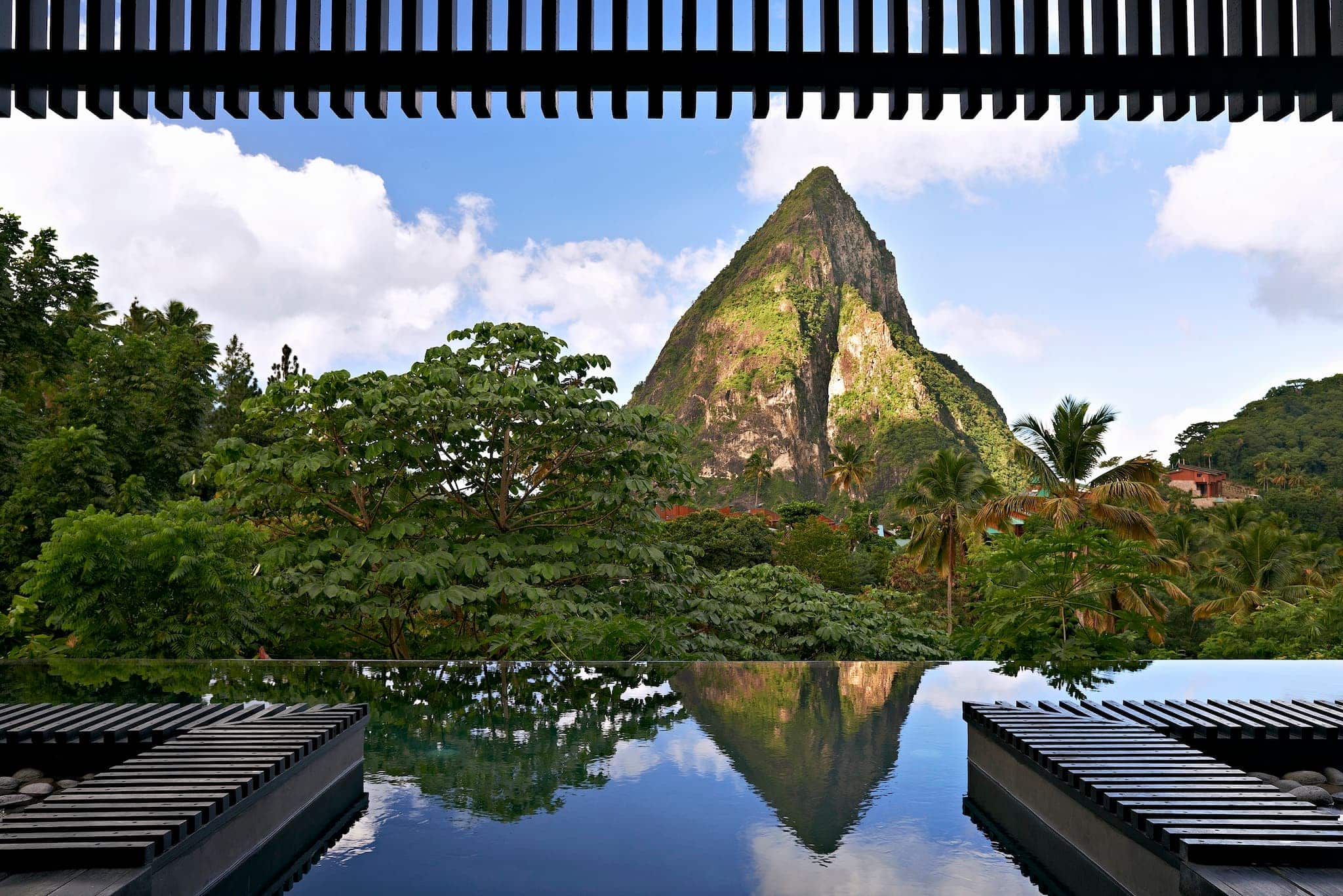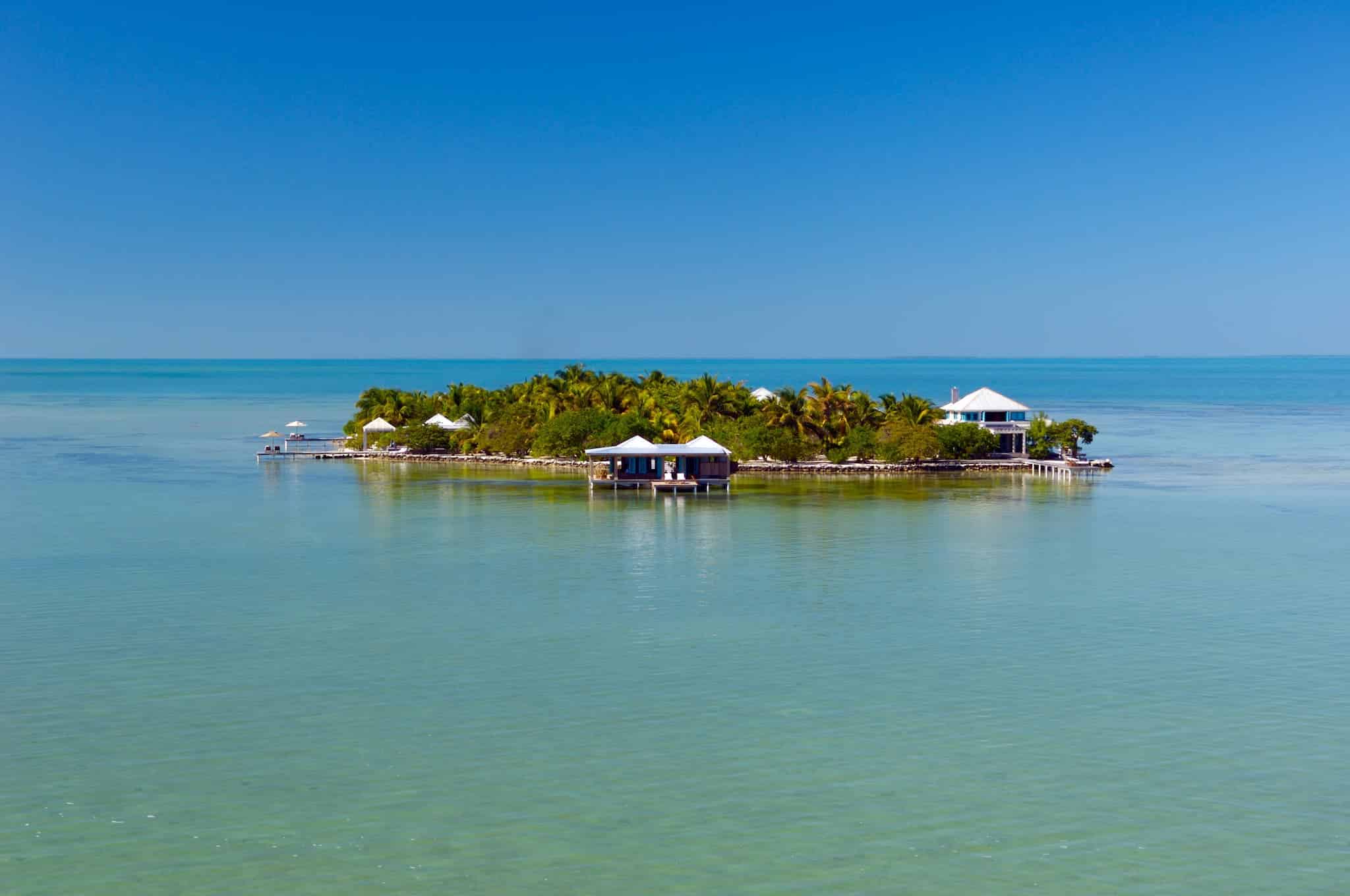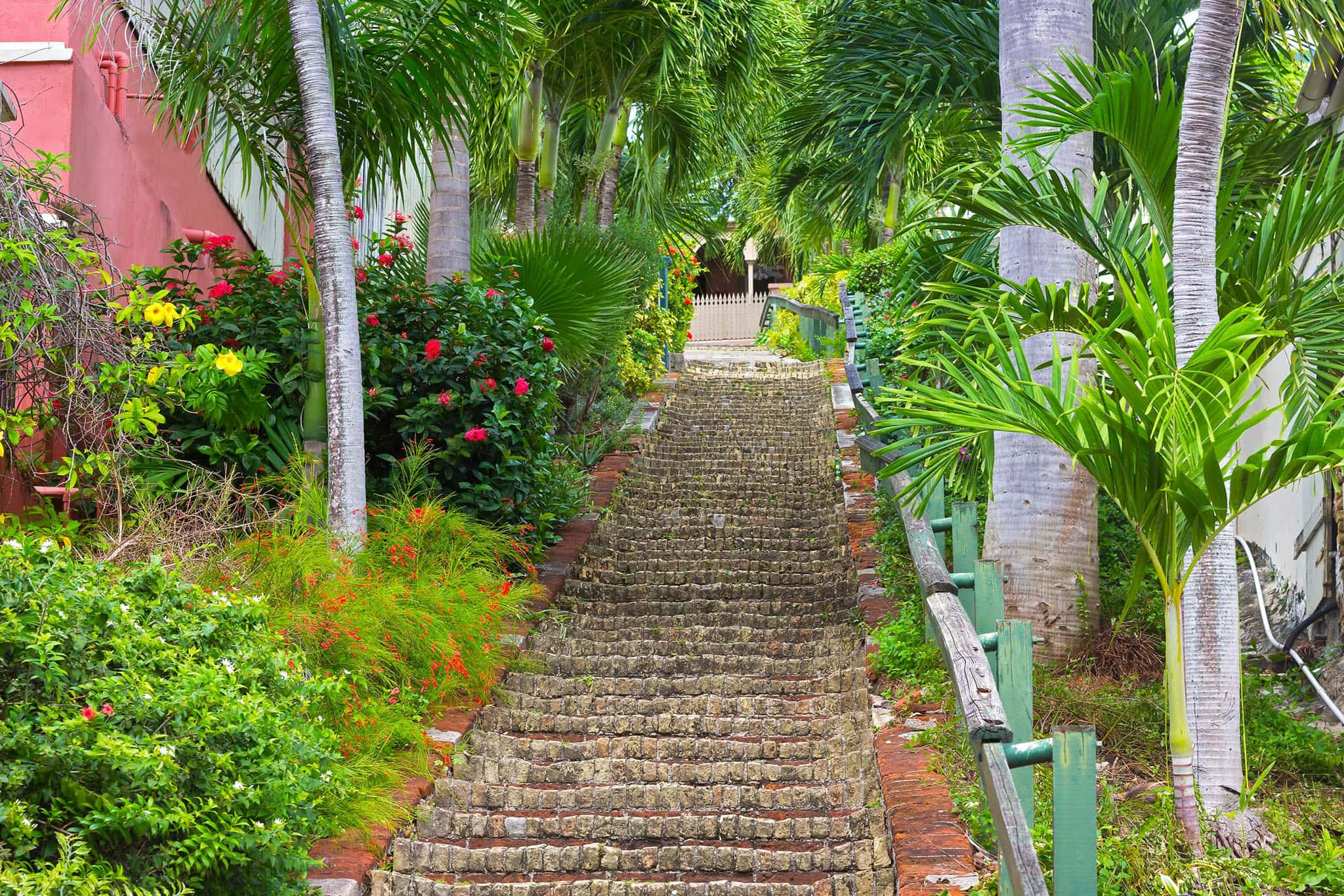Caribbean harbors have an energy all their own. In contrast to the busy industrial ports of the world, they offer a more intimate take on nautical customs. Colorful cargoes and passengers arrive and depart on diminutive island freighters and vintage ferries.
Historic waterfronts are filled with the energy of commerce, but also populated by the merely curious, who come to stroll the docks, ogle the yachts, and see what treasures an incoming mail boat might disgorge. Here are seven of our favorites.
English Harbour, Antigua
Locals say the best place to be on a Sunday evening in Antigua is on Shirley Heights, a lookout point where you can savor some barbecue and listen to the steel drums while watching the sunset over English Harbour. The party continues well into the night. Down on the waterfront at Nelson’s Dockyard, the action might be a bit more sedate, but no less memorable as you enjoy dinner at one of the fine restaurants housed in the restored buildings of this former colonial-era British naval base. The dockyard becomes the focal point for nautical revelry during the island’s annual Antigua Sailing Week.
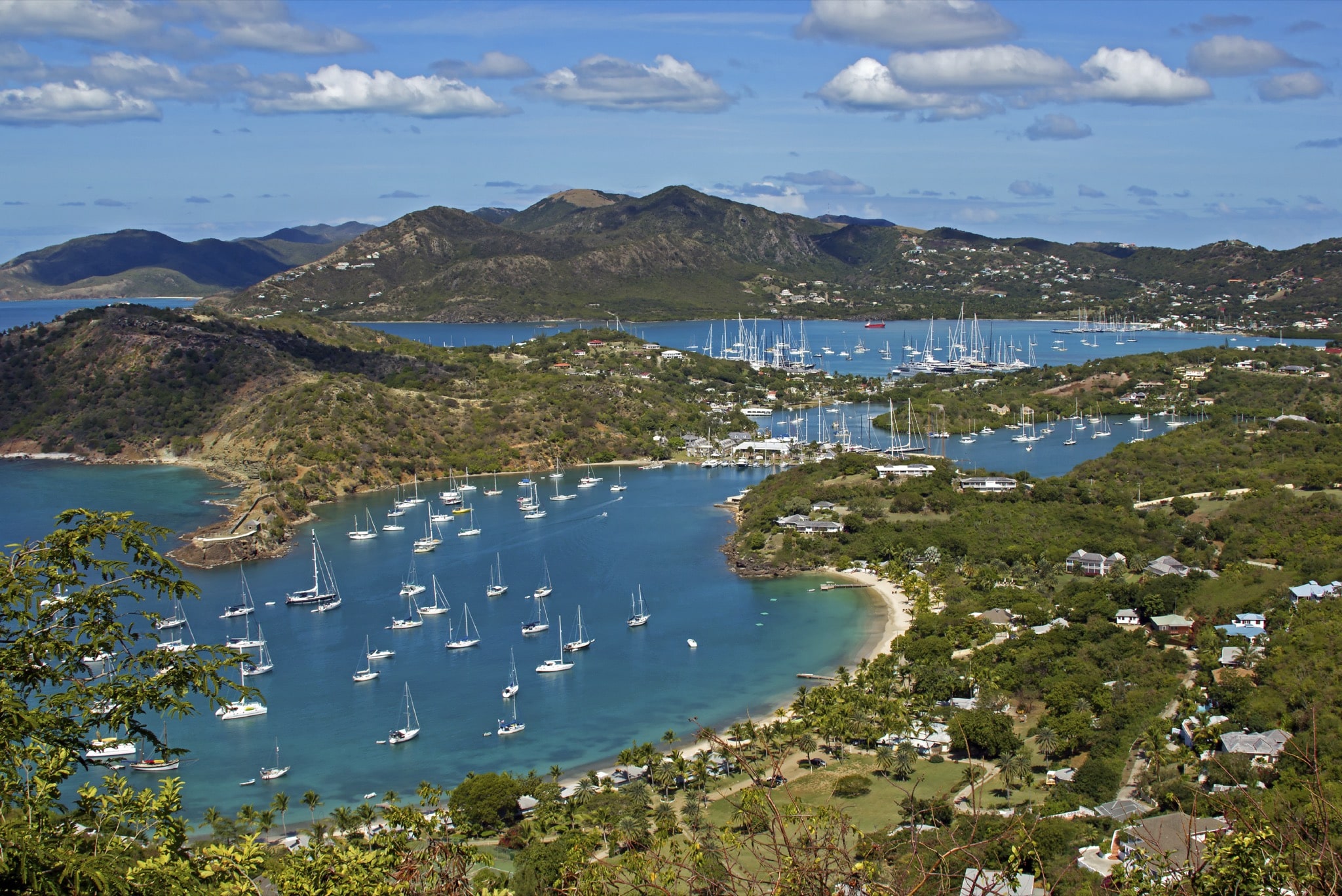
Bridgetown, Barbados
When English settlers first arrived in Barbados in 1628, they discovered a natural harbor along the wide mouth of the Constitution River, which had already been spanned with a bridge built by Carib tribes. Hence Bridgetown, the village that sprang up along the harbor and is now the island’s principal city. Today it is the pedestrian-only Chamberlain Bridge that connects the two sides of the river. Along the south bank, historic warehouses have been converted into restaurants and shops. Stop for lunch at the Waterfront Café before finishing your tour of the waterfront, which is now a UNESCO-protected area.
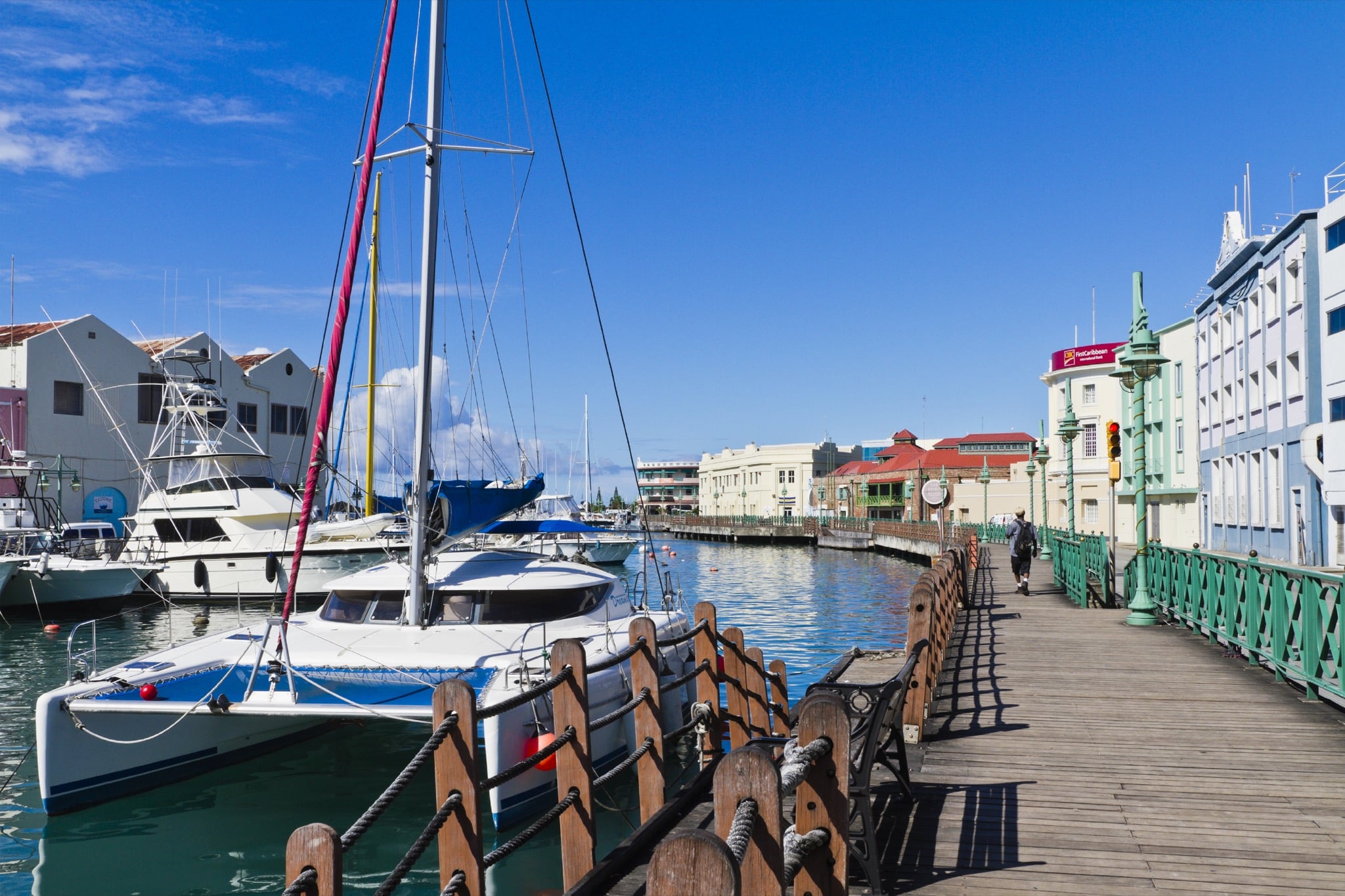
Hamilton, Bermuda
Hamilton Harbour provides vessels with all-weather protection, but entry requires captains to negotiate some narrow passages through the reef. As a result, the big cruise ships usually dock at the Royal Naval Dockyard or St. George’s, leaving this downtown anchorage primarily to pleasure boats and the ferries. Locals and visitors travel from one end of the island chain over water and the ferry system runs much like the local bus system—on schedule and efficient. The landing in Hamilton puts you right on Front Street where you can stroll the harbor and check out the mega-yachts or shop and settle in for lunch.
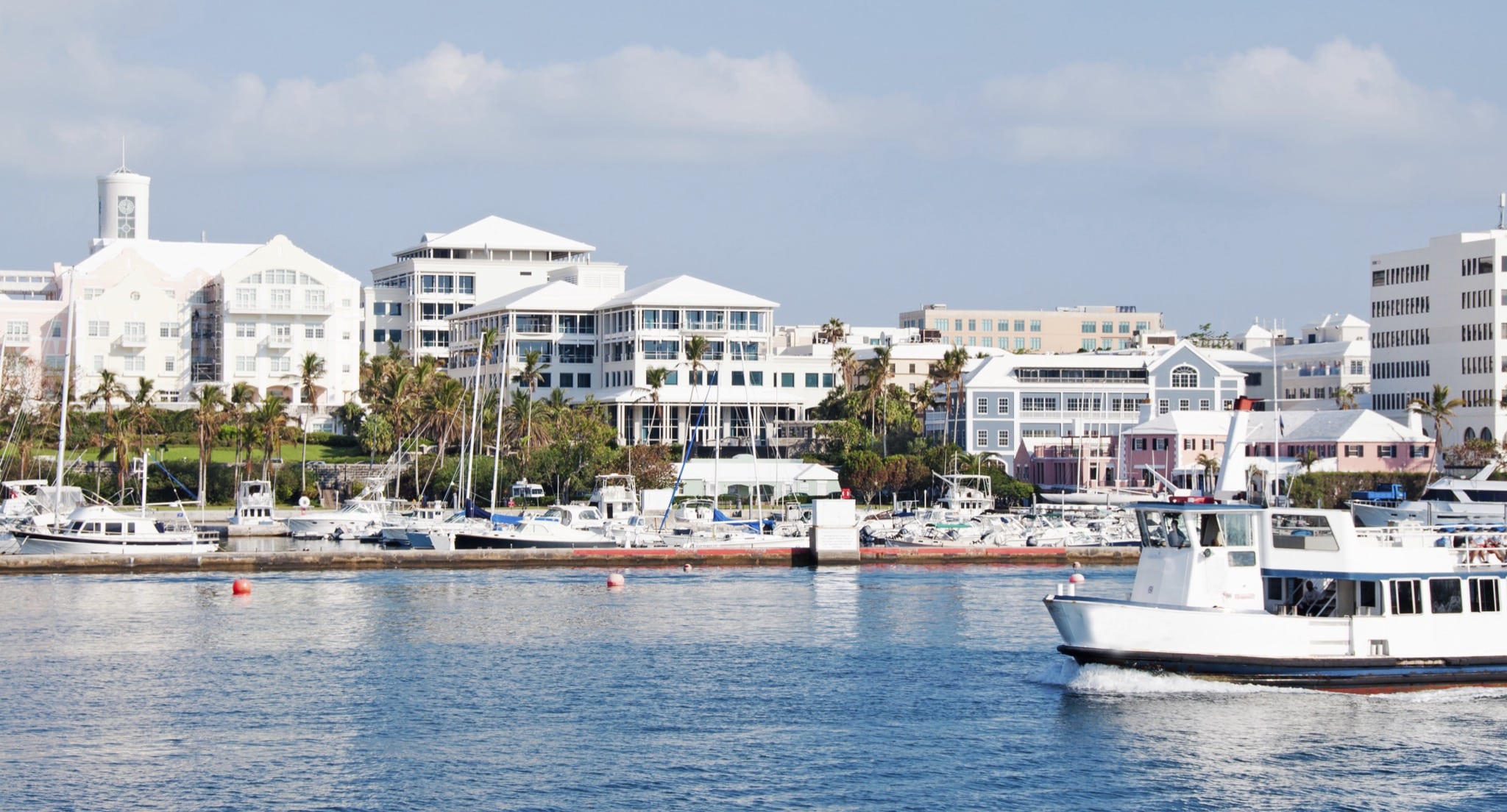
St. George’s, Grenada
St. George’s has earned a well-deserved reputation as one of the prettiest and most colorful harbors in the Caribbean. In the horseshoe-shaped inner harbor known as the Carenage, native fishing boats rub gunnels with gleaming mega-yachts. This scene, taken from Fort George and the hillside that guards the harbor entrance, shows off the red roofs and sherbet-colored buildings of a city that was founded by the French in 1650. The old town is crisscrossed with steep and narrow cobblestone streets, and stone-and-stucco buildings dating from the colonial era now house shops, bars, and restaurants.
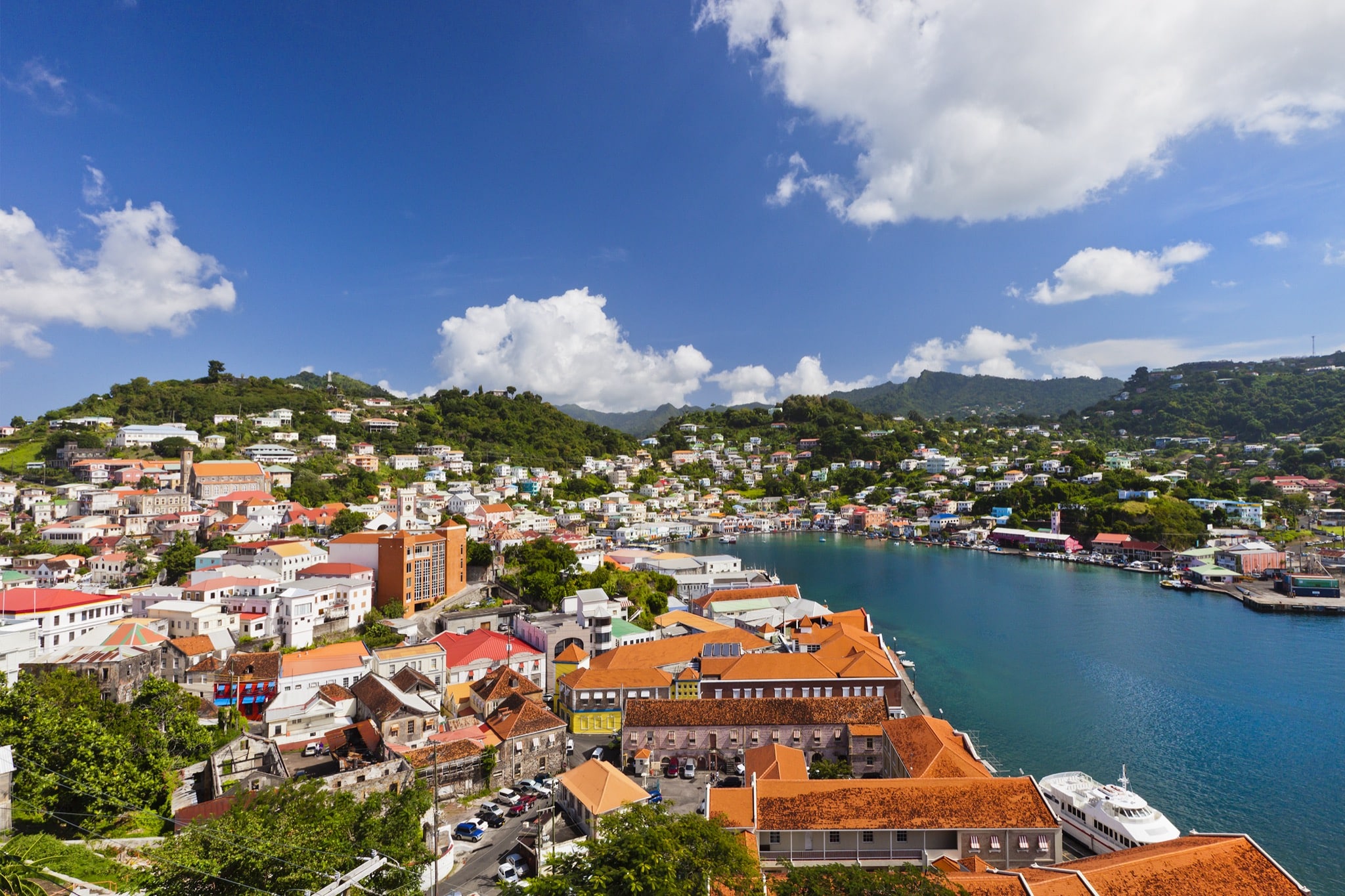
San Juan, Puerto Rico
Looking northward from the Port of San Juan to the skyline of Viejo San Juan gives the appearance that this historic enclave is much larger than it really is. The district occupies an eight-by-ten area and is actually an island connected to the mainland of San Juan via three bridges. Entering the gates of the old city will lead to blue cobblestone streets flanked by 16th and 17th-century buildings, many of them restored with wrought iron balconies draped in flowering plants. Be sure to take the Paseo de la Princesa, the scenic walkway that surrounds much of Old San Juan.
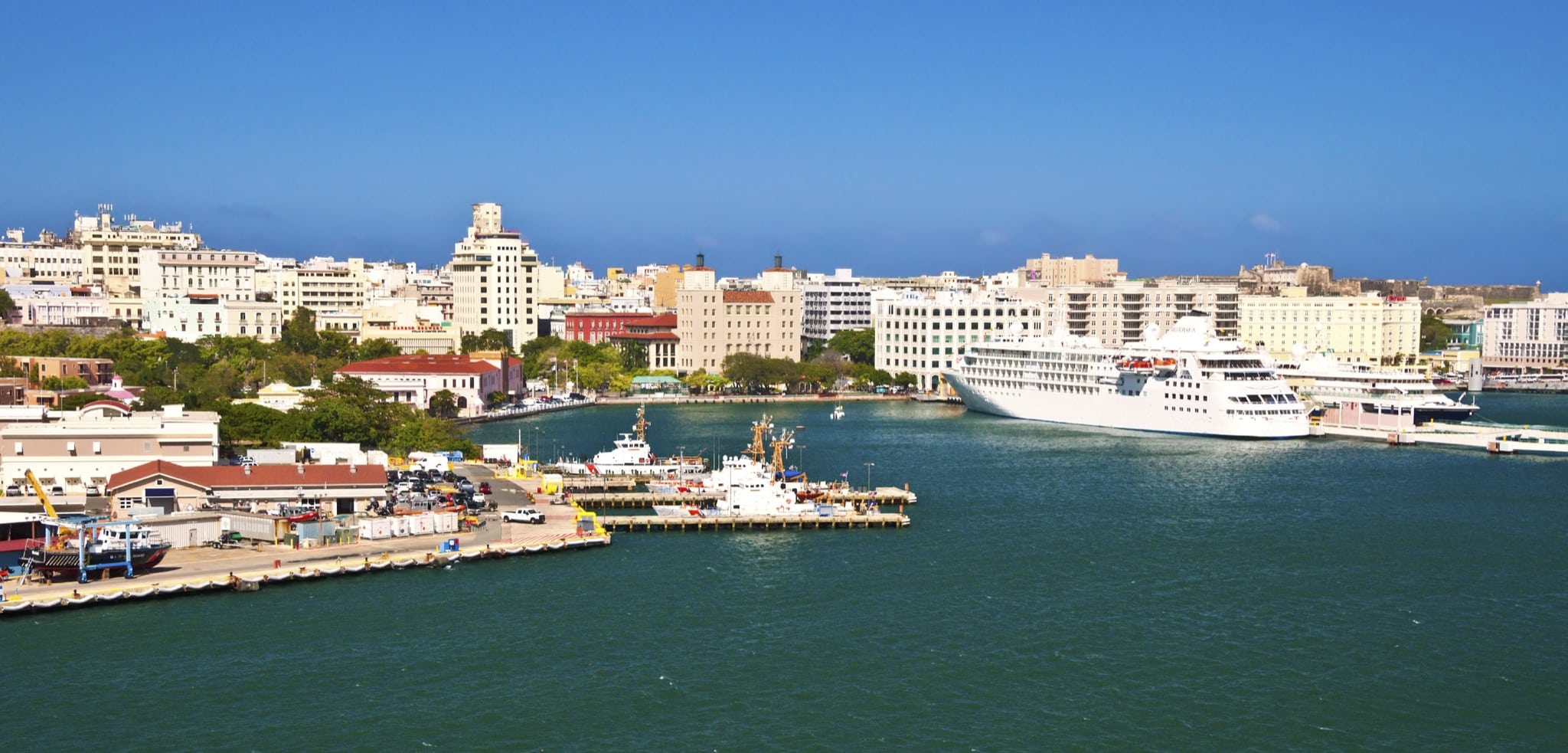
Philipsburg, St. Maarten
The town of Philipsburg almost overflows the low-lying isthmus that separates St. Maarten’s Great Bay and the Salt Pond. When cruise ships come calling, the streets of this little village are packed with shoppers looking for duty-free bargains, trying their luck at the casinos, and stopping off at the many restaurants and bars. The white sand beach of Great Bay is just a stroll away. Typically a busy spot. It’s reminiscent of beaches in Europe where the beach towels and umbrellas are thick, and many congregate to chat, refresh, and be seen—it’s all very social.
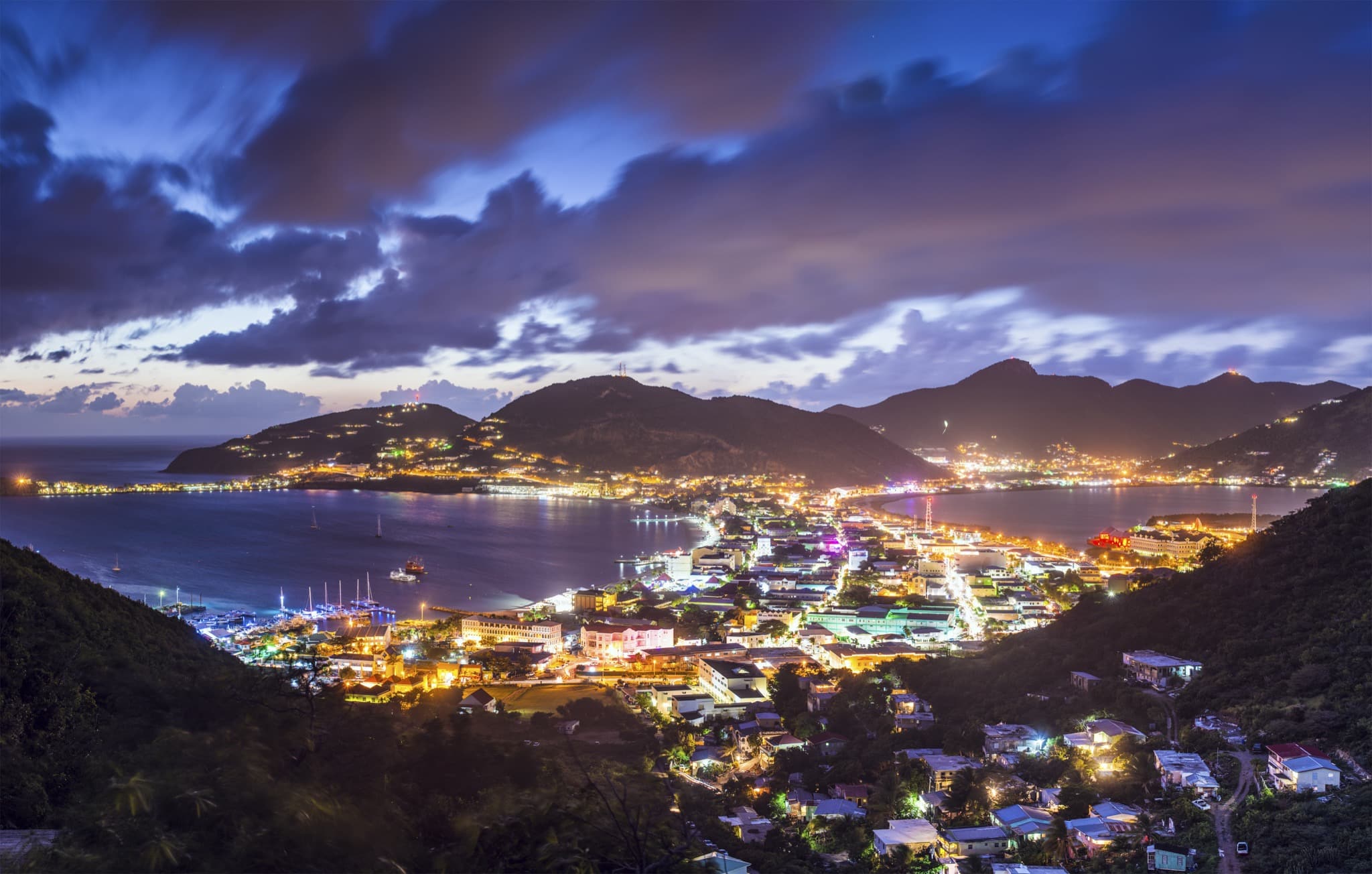
Willemstad, Curacao
It’s as if a little bit of Holland was transported to the Caribbean and given a colorful makeover. Curacao’s Willemstad waterfront features iconic Dutch colonial buildings that overlook St. Anna Bay and wharfs lined with floating markets and sidewalk cafes. Much of this historic downtown is now a UNESCO World Heritage Site. The pedestrian-only streets of the Punda district draw shoppers and strollers. The quieter Otrobanda neighborhood lies on the western side of the harbor entrance, connected by the Queen Emma Bridge, a pontoon-supported span that dates to 1888. When the bridge remains open for boats to pass, ferries become the best connection.



